May into June is generally the peak of Saharan Dust surges moving across Trinidad, Tobago, and the Lesser Antilles. A major and high-concentration surge of Saharan Dust has begun to move across the country, with peak concentrations set to begin on Wednesday.
What you need to know
— Saharan Dust Surges: A significant and high concentration surge of dust is set to move across T&T on Wednesday, May 18th, 2022 with significant concentrations remaining across the country until Friday, May 20th, 2022. Elevated Saharan Dust levels will remain across the country until Friday, May 27th, 2022.
— Impacts: Air quality across Trinidad and Tobago will vary between moderate and unhealthy levels through Friday, May 20th, 2022, at times, dipping to very unhealthy levels. By Saturday, May 21st, 2022, air quality is set to vary between levels that are moderate to unhealthy for sensitive groups.
— What Should You Do: Prepare for a major Saharan Dust surge. The air quality will continue to be degraded. Sensitive groups need to take necessary precautions, while the general population should consider taking preemptive precautions based on air quality levels.
Current AQI Levels Across T&T
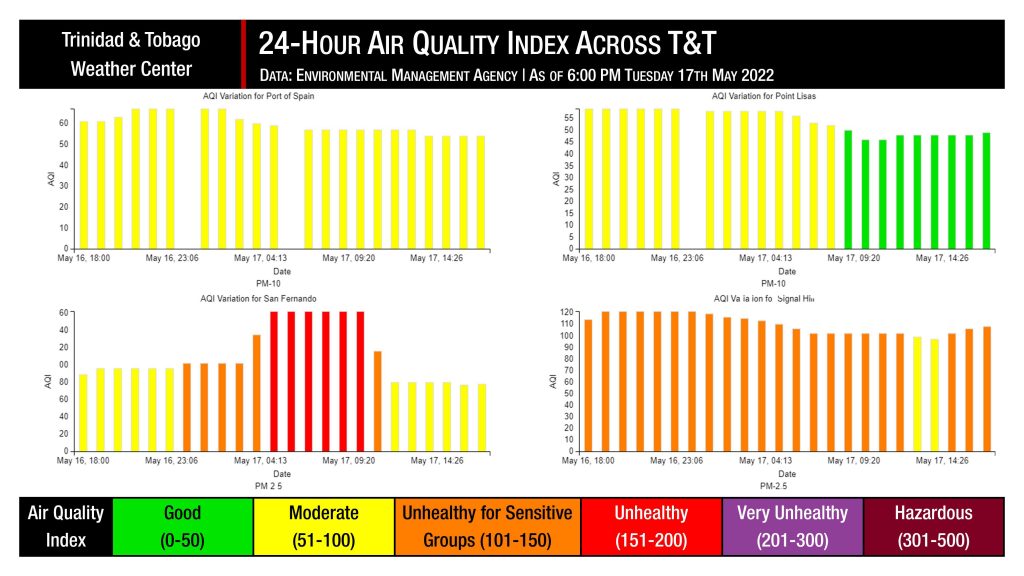
Air quality levels have been variable across Trinidad and Tobago over the last 24 hours. The Environmental Management Agency (EMA) air quality monitoring station at San Fernando has reported air quality levels between moderate and unhealthy. Meanwhile, at Signal Hill, air quality has varied between moderate to healthy for sensitive groups. At Port of Spain, air quality has consistently remained at moderate, while at Point Lisas, air quality briefly improved from moderate to good, due to passing showers.
These measurements are based on PM2.5 (particulates the size of 2.5 micrometers and smaller, usually associated with increases in Saharan Dust, vehicle exhaust, and smoke) and PM10 particulates.
Visibility has dropped to 6 kilometers at the Piarco International Airport and 9 kilometers at the A.N.R. Robinson International Airport at Crown Point, Tobago, outside of shower activity over the last 24 hours.
Saharan Dust Forecast

Forecast models indicate that these high to significant Saharan Dust levels will persist across T&T through Friday, May 20th, 2022. Air quality across Trinidad and Tobago will vary between moderate and unhealthy levels through Friday, May 20th, 2022, at times, dipping to very unhealthy levels. Visibility during this period may drop as low as 3-5 kilometers at Piarco and as low as 5 to 7 kilometers at Crown Point.
From Friday, May 20th, 2022 through Friday, May 27th, 2022, decreasing high to moderate Saharan Dust concentrations are forecast. Air quality during this period is forecast to vary between levels that are moderate to unhealthy for sensitive groups.
Air quality and visibility are set to improve from Friday, May 27th, 2022 onward.
What does this mean for you?
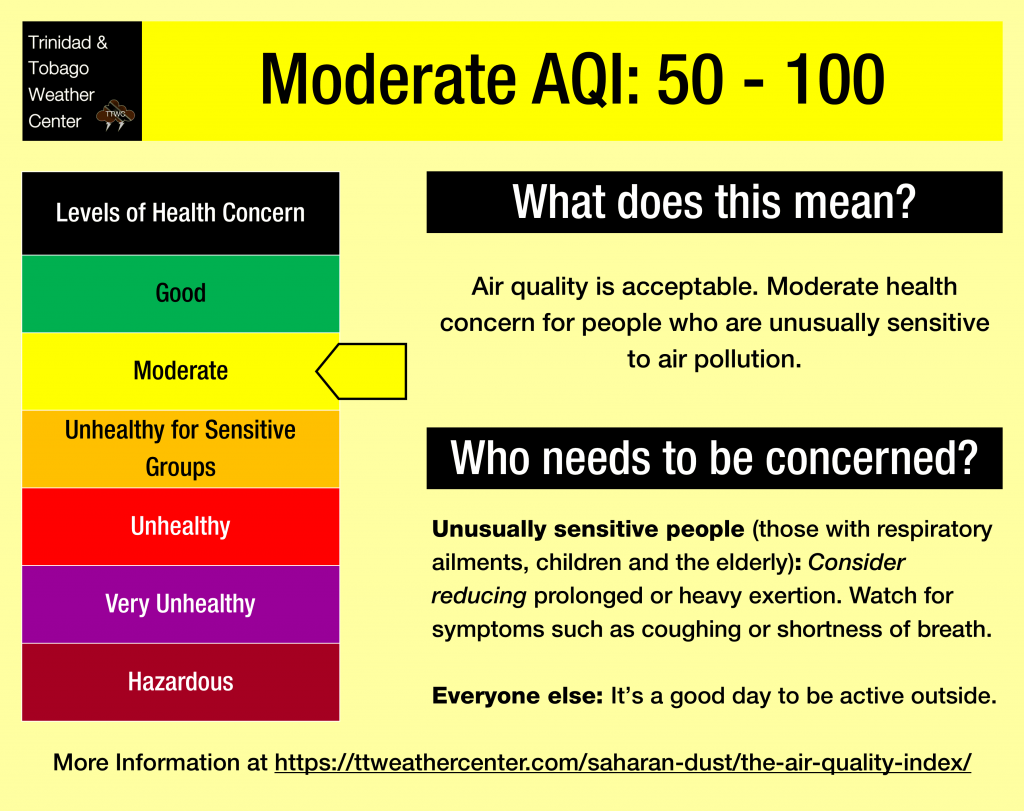
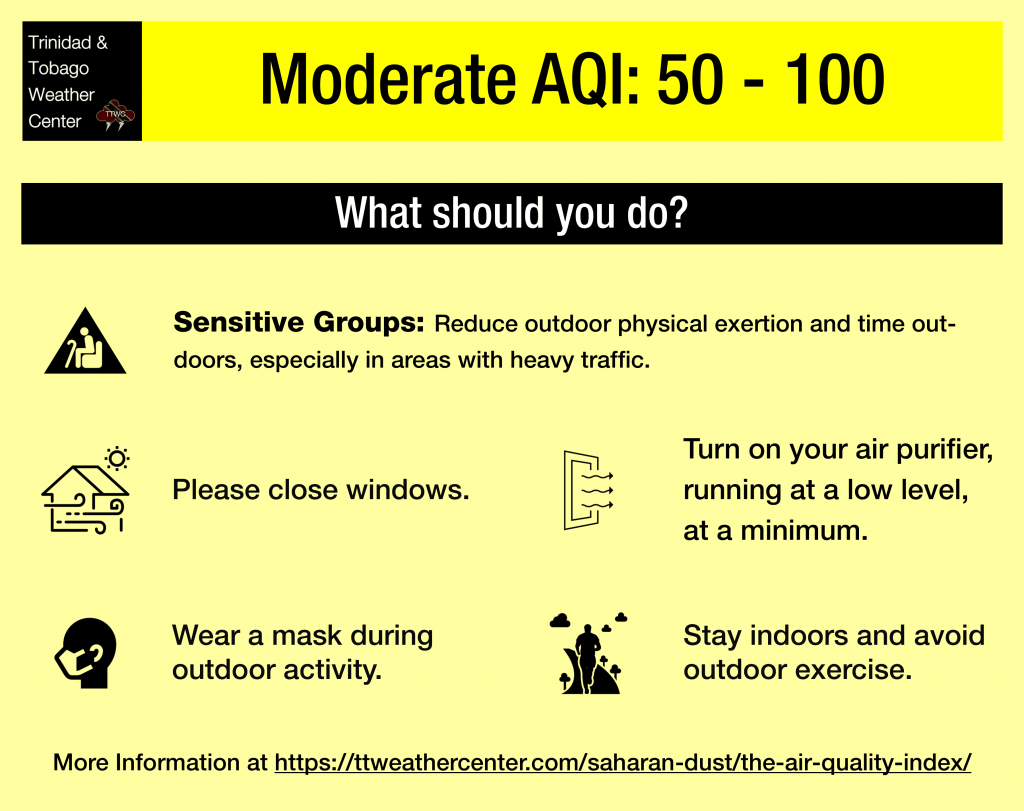
Over the next ten days, air quality will be degraded, particularly from Wednesday through Friday. High traffic periods, particularly between 6:00 AM and 9:00 AM, and again from 3:00 PM through 6:30 PM, air quality may be further reduced in localized areas.
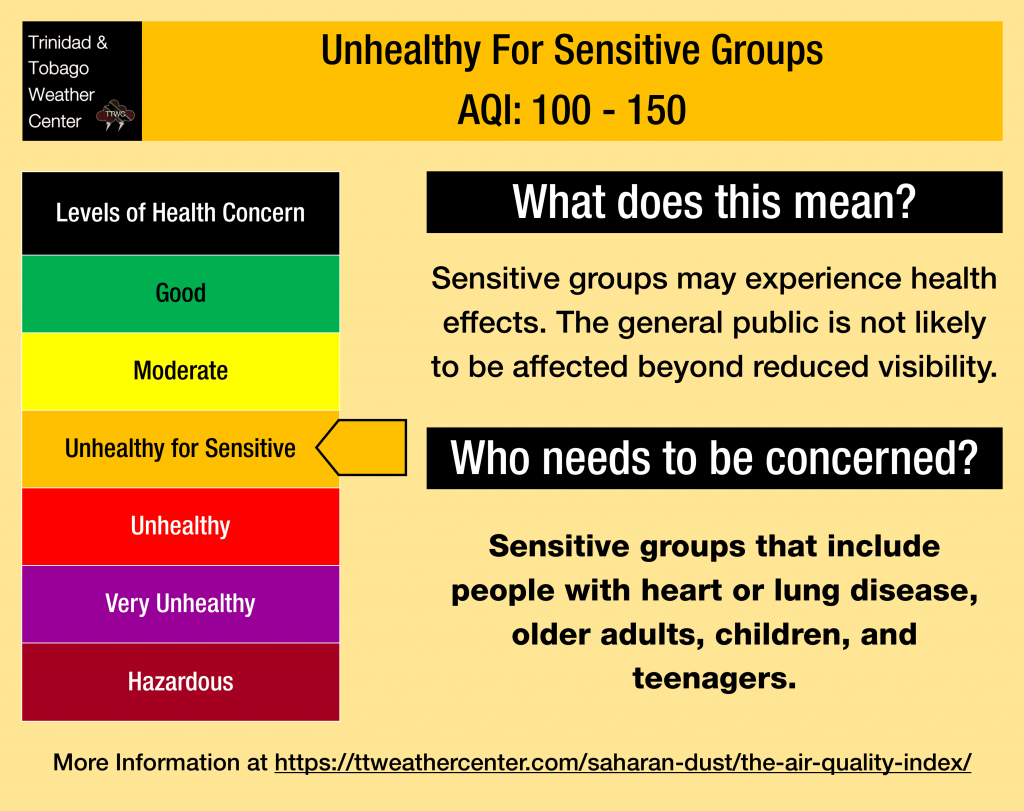

Sensitive groups, such as children, the elderly, and persons who suffer from respiratory ailments and allergies should avoid prolonged or heavy exertion and should keep medication nearby.
For everyone else, you should reduce prolonged or heavy exertion and take more breaks during outdoor activity.
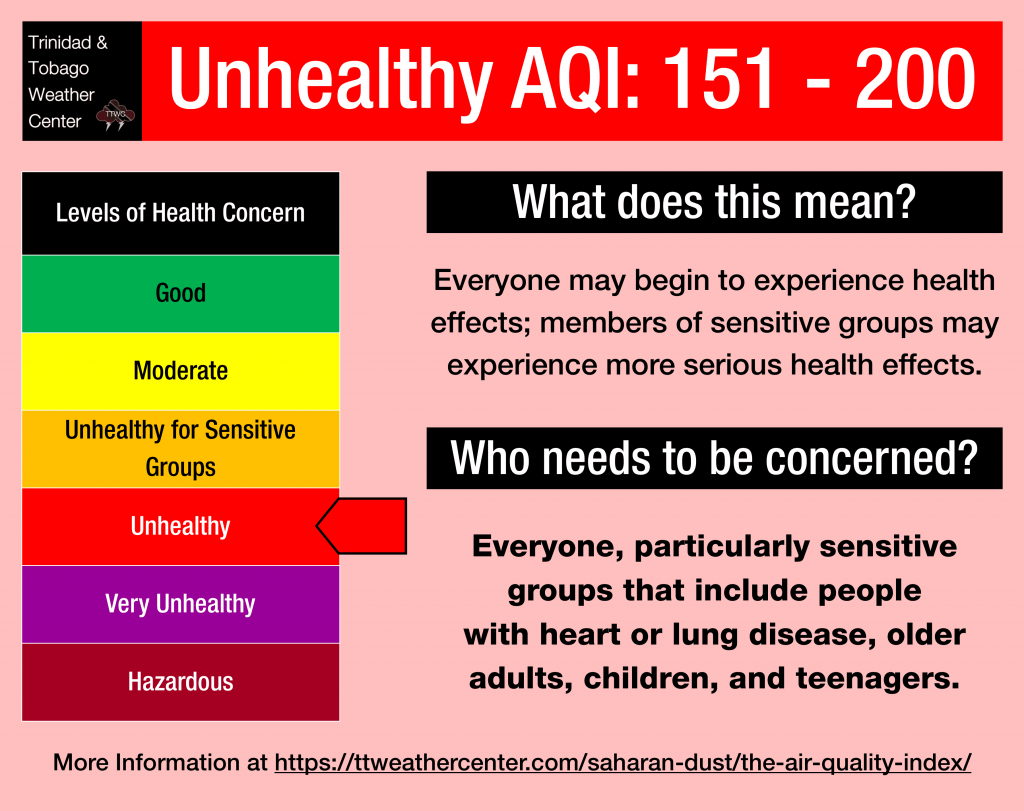
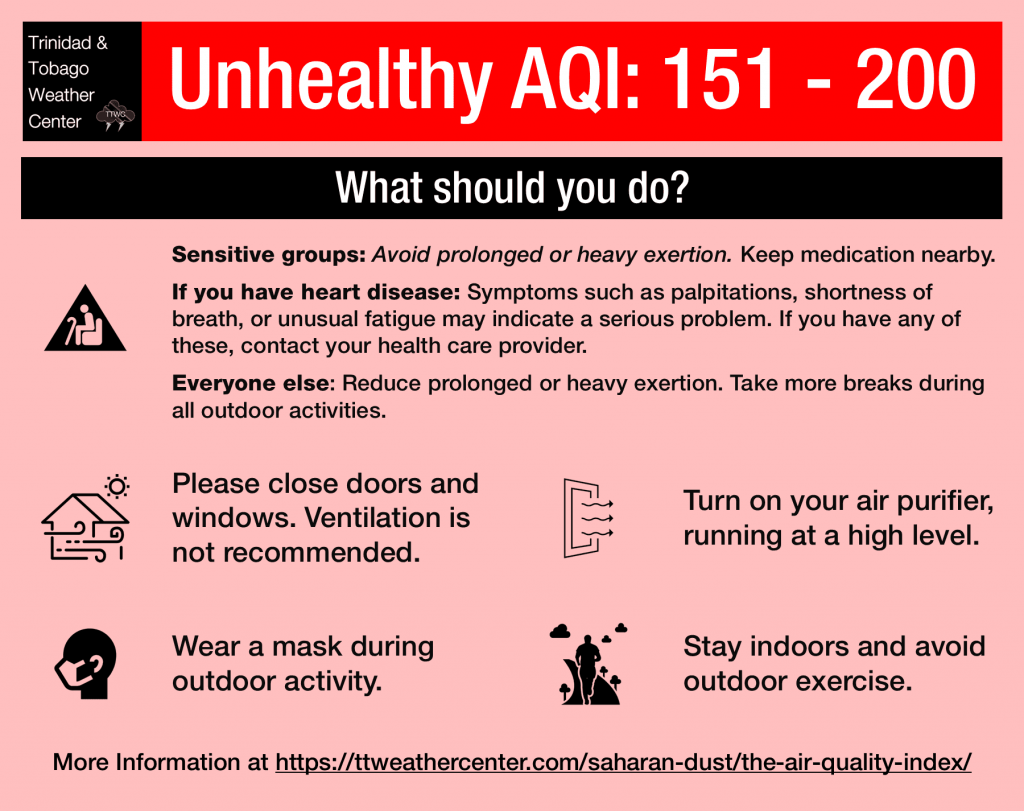
We’re in a period where the Intertropical Convergence Zone and tropical waves may shield Trinidad and Tobago from the Saharan Dust events. While tropical waves play a notable role in moving dust across the Atlantic and the Eastern Caribbean, these periodic tropical waves also improve air quality.
The concentration of the dust that follows the wave depends on the strength of the wave as it moves off the West African Coast. This is because of stronger thunderstorms across Central Africa. As strong winds move downward and outward from these thunderstorms, the wind kicks up dust as it moves across parts of the Saharan Desert and transports it into the upper atmosphere. This “plume” of dust follows the axis of the wave as it progresses westward into the Atlantic.
Dust that makes it into the upper levels of the atmosphere can then get transported across the Atlantic Ocean. The plumes of dust eventually affect the Eastern Caribbean.
Larger, more concentrated plumes of Saharan dust begin to occur in April and continue through November.











